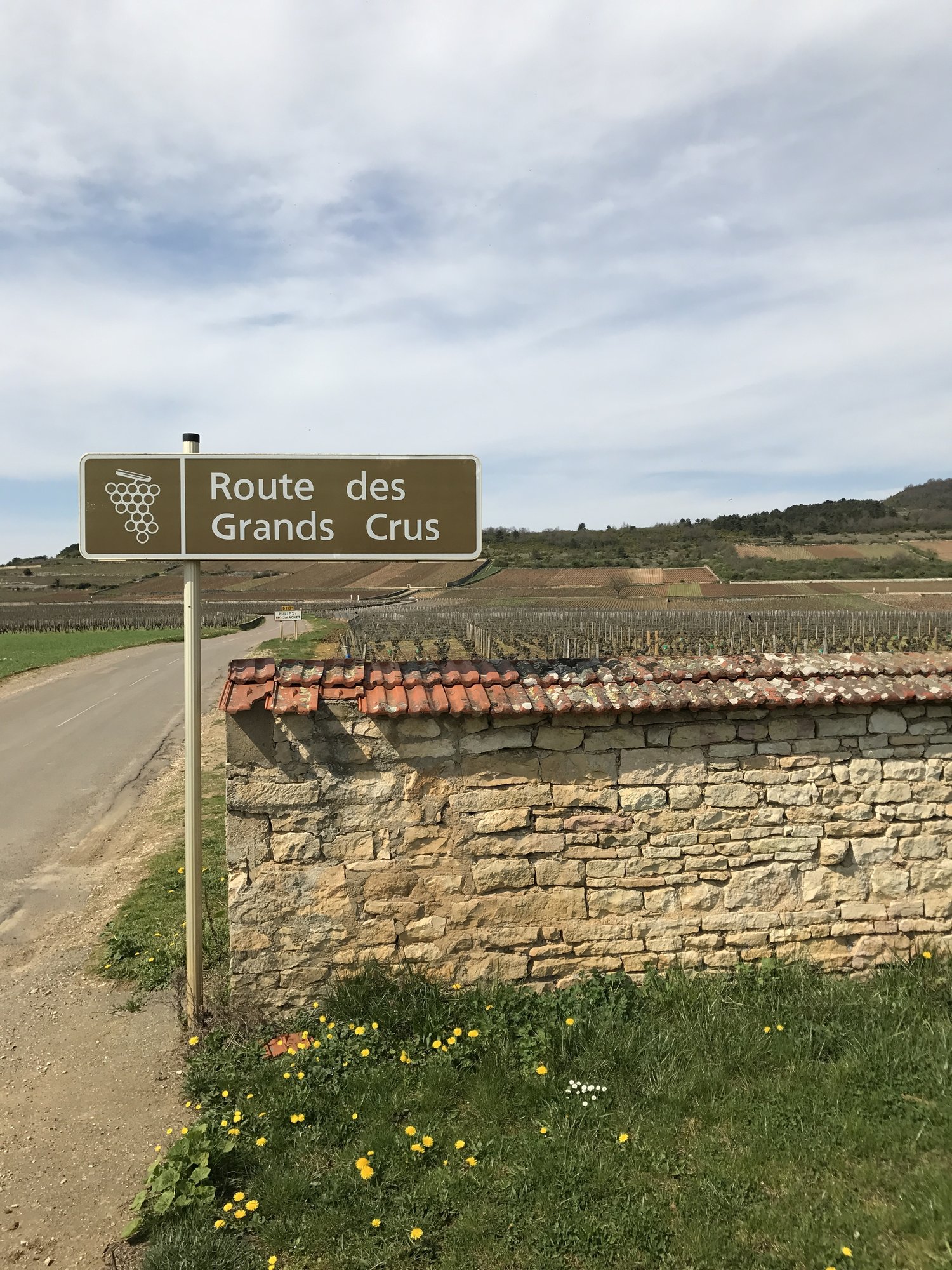Pure Burgundy
06/21/2017
06/21/2017
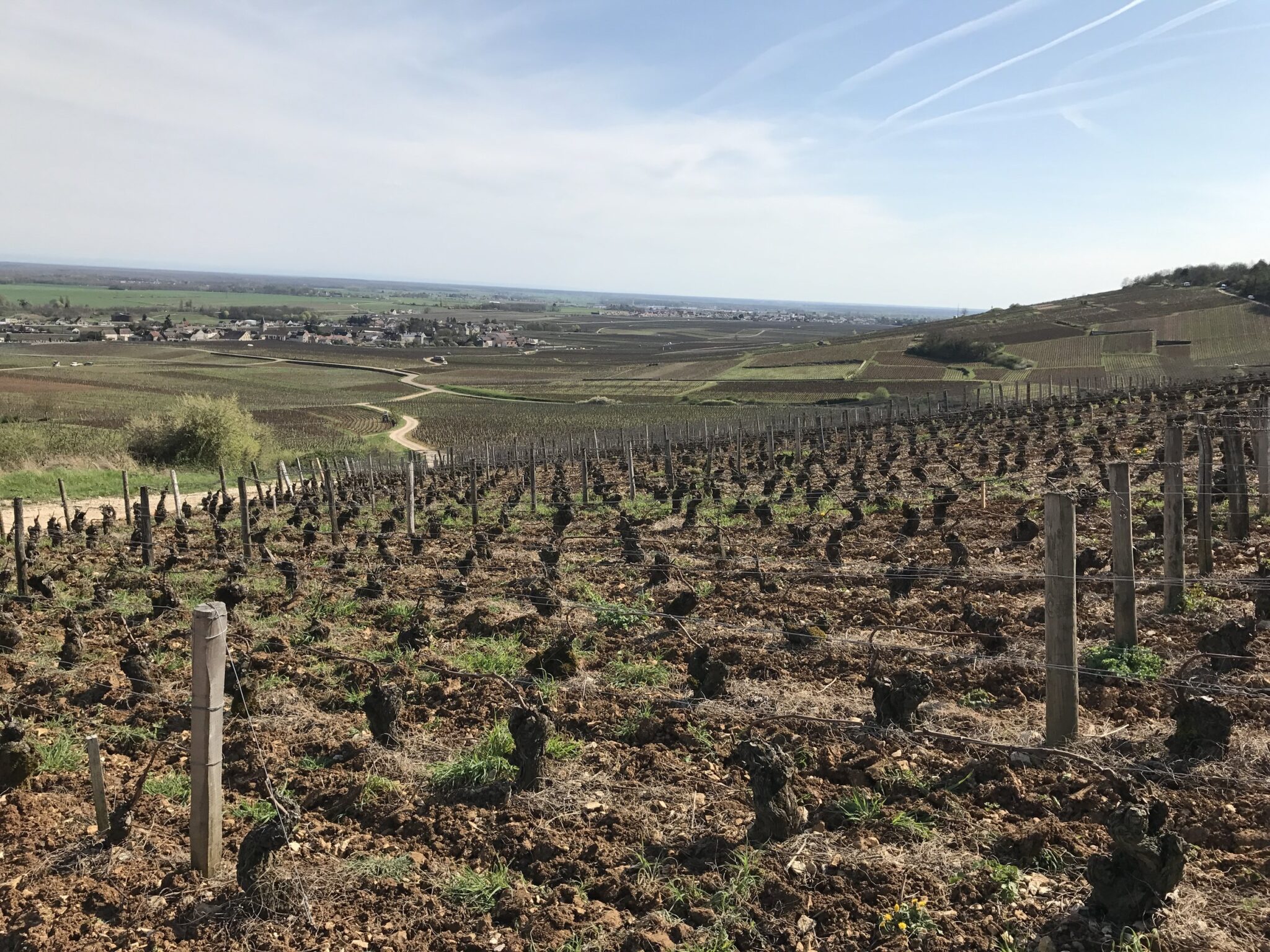
29 March 2017
Today, we headed just south of Beaune to Veuve Ambal. I made the appointment through Rue des Vignerons, and did not appreciate just how large they are. It is a huge operation. The tour itself was with headphones and RFID or Wifi or Bluetooth [or some other tech magic] proximity. We walked around a large catwalk that circled the production area on the second [third for US folks] floor.
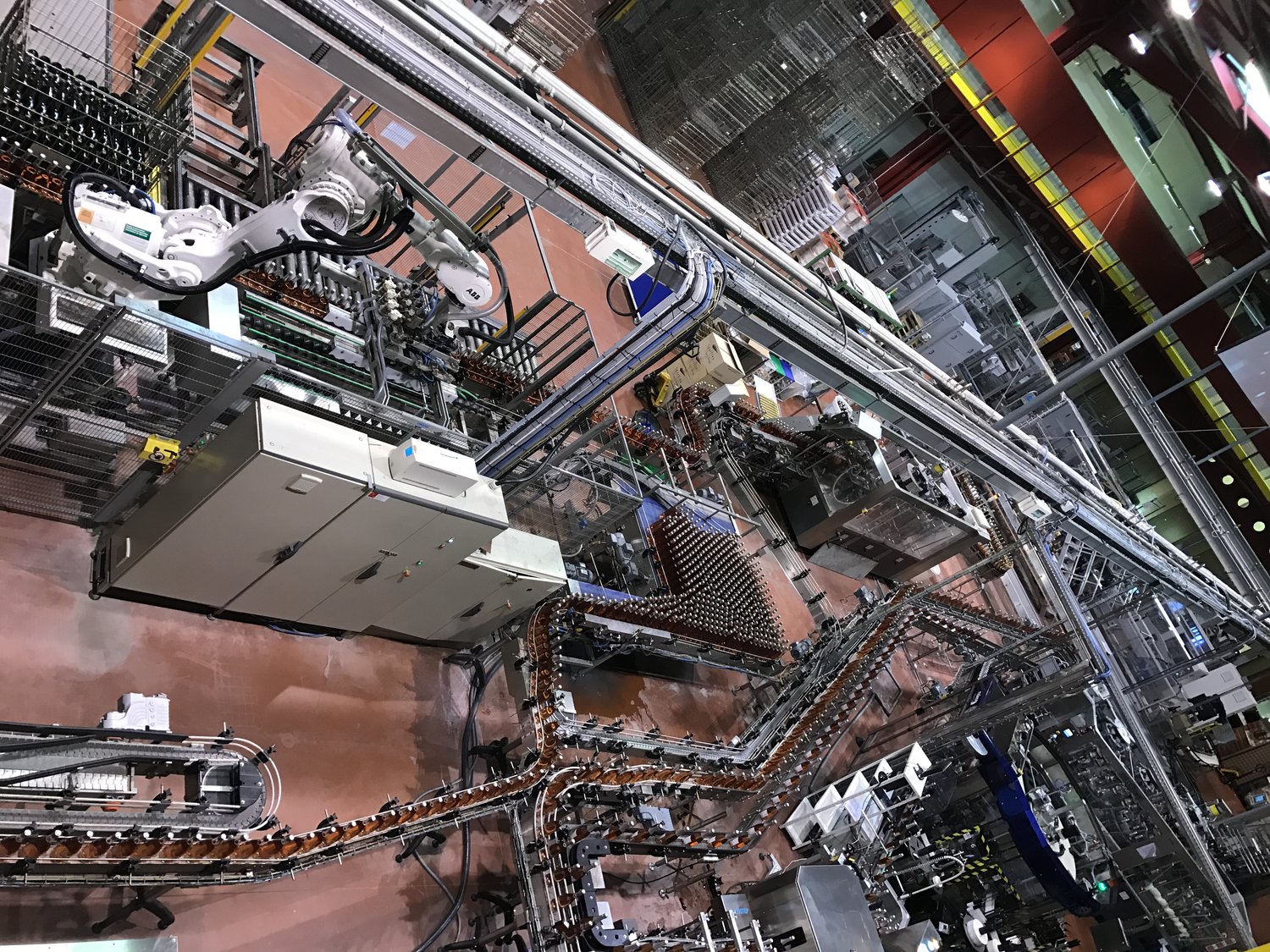
They told us what they produce annually, but I have already forgotten. Let’s just say it was a bunch, several million bottles. The factory floor is highly robotic, everything from filling and stacking bottles to riddling to disgorgement to corking, labeling, and packaging. It really was an eye-opening tour into a very large production house. The cremant range from E8 to E18 per bottle; I do not believe any of the wines were over 20.
Back to the tasting room where we tasted several different cremants, ranging from bone dry to Demi-sec. They were all very satisfying wines, and we took a bottle of the Blanc de Blancs and the sweet-ish rosé cremant.
From Veuve Ambal, we drove north toward our next appointment, though it was not for a couple of hours. We had lunch just across the D974 at La Gremelle. Dianne said, “This almost made up for last night.” It really was a fantastic meal, and we just had the lunch special! It was a starter of mixed vegetables, some steamed, some raw, served cold and lightly dressed. The main course was a veal dish in a cream sauce, and the dessert was a rhubarb dish that we substituted a creme brûlée. We each had a glass of red Ladoix, but I have forgotten the producer. It was a much better wine than what we had at dinner.
We walked across the street to Domaine Chevalier, and we were greeted by Julie. She is the oldest of five sisters, and she said that her father referred to them all by number! She was number one. She is the logistics manager, number three is the winemaker and vineyard manager, and number five is the accountant. The other two sisters do not work at the domaine.
She led us into the cellar, and gave us a quick look around. She had cancelled all of the appointments for today except ours, because she was very busy filling a 21 pallet order. An order she was having to repack on new pallets because they were on ‘not good ones’. I know her back and arms were hurting.
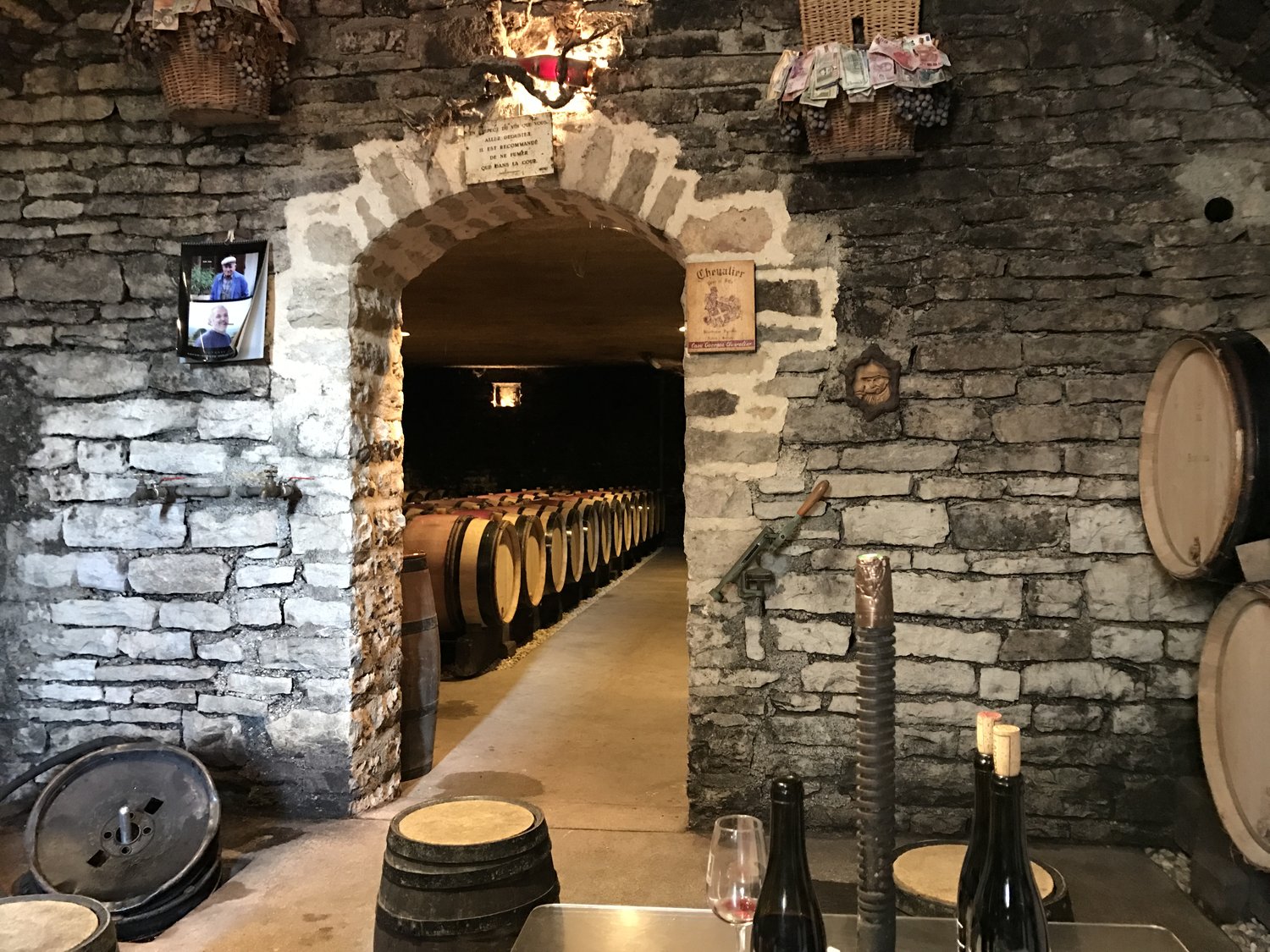
We tasted four wines, one white and three red. There are four levels of classification in Burgundy: generic Bourgogne, which comprises about 50% of the total area; Villages-level, which are allowed to use the name of the village in which it was grown, and this makes up about 35%; Premier Cru, which uses both the name of the village and the plot where the grapes were grown and the words ‘Premier Cru’ and is approximately 13% of total area; and Grand Cru, the top level wines representing only 1.2% of the total area.
The first wine we tasted was a villages white 2015 Ladoix. It was a nice crisp wine. The second was a villages red 2015 Ladoix. Very fruity, it is meant to be consumed fairly young. The third was a 2013 Ladoix Premier Cru, and the last was a 2013 Aloxe-Corton Premier Cru. I really liked both of these wines; the AC was a bit more earthy and a little less fruity than the Ladoix. Dianne preferred the villages 2015 Ladoix, and we took a bottle of that home with us. My only regret about our visit to Domaine Chevalier is that we did not pick up several bottles.
We drove back to the flat, arriving a little before 5p. We rested for a few minutes, then headed back to Beaune and La Lune for our 7p dinner. La Lune is a French-Japanese fusion restaurant, and the best illustration I can offer is the sauce served with the tuna dish: balsamic reduction with shallots and butter. It was delicious. We had four plates that we shared, served tapas style, so I guess it really is French-Japanese-Spanish fusion!
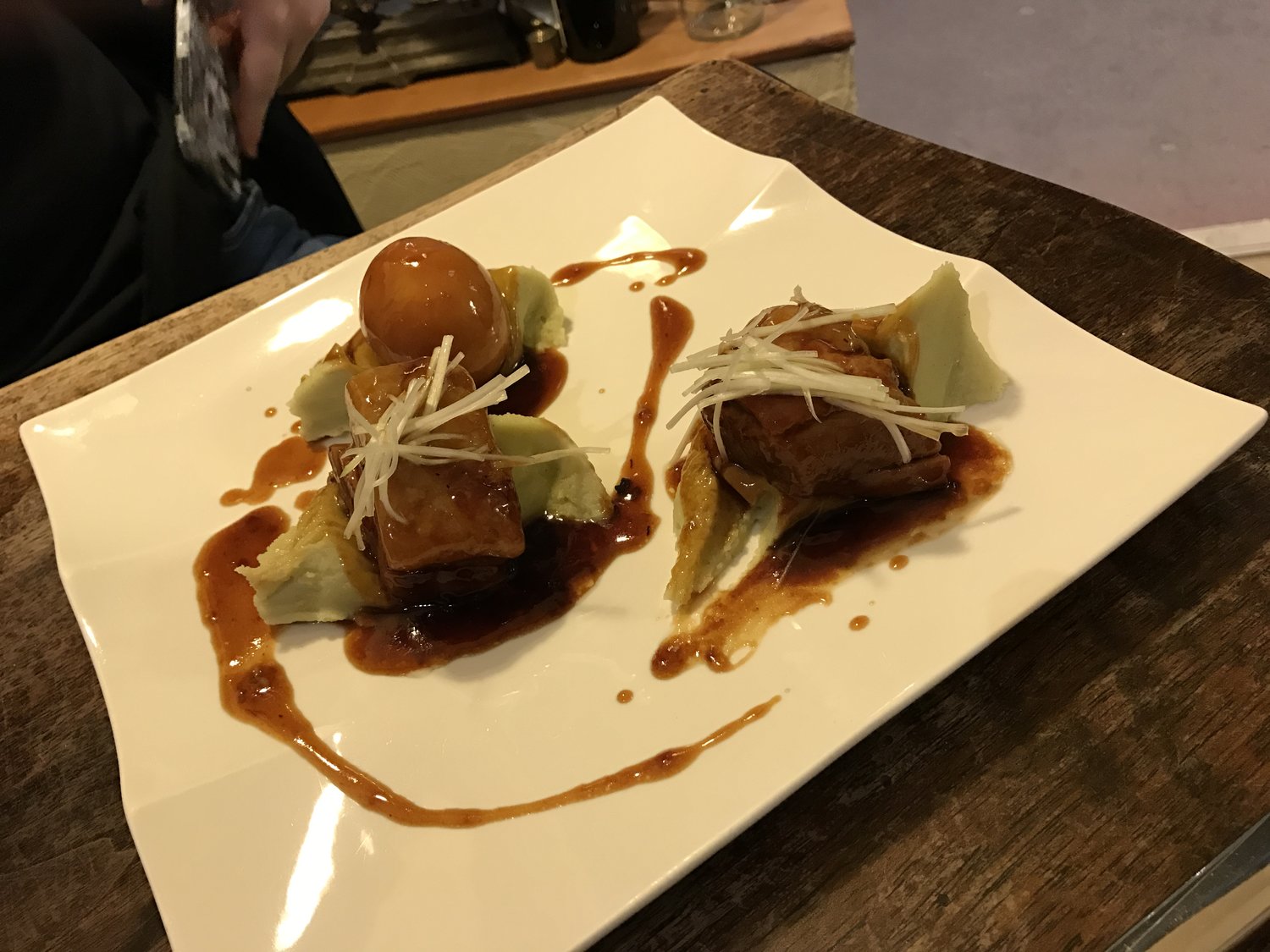
The first was a mushroom dish, and we ordered it for me to be adventurous. Our server told us that it had a meat-like texture, so I rolled the dice. It was delicious. Second course was the tuna I described above, seared just a little on all sides. I actually think this might have been even better raw, but then again, it was nearly perfect.
Our third course was a turbot carpaccio, and it was the weakest dish of the evening. Even so, it was still very good. The turbot is just better cooked, in my view. I have had it several times on this trip, and it has always been a delicious meal. Final savory course was a pork belly with wasabi mashed potatoes. It was really tasty. We ended the meal with a creme caramel.
We walked back to the flat, wrote in our travel journals, and called it a great day.
30 March 2017
We slept a little late this morning [0830], then showered and dressed for the day. We walked through Beaune, just a casual stroll, until our 1100 appointment at Maison Jaffelin. We met Neal, our host, and he took us into the cellar.
Jaffelin is a negociant, which means they do not own any vineyards; they purchase fruit from growers in the area. They have contracts with those growers and the contracts tend to run 3-4 years. They may lose or keep the growers after each period.
Into the winery, Neal showed us the fermentation vessels. Jaffelin makes their Villages and Premier Cru wines in this facility, their oldest, and in a normal year, they produce about 40,000 bottles from here. Their new facility produces the sparkling cremant and their Bourgogne level wines there. That facility produces about 250,000 bottles.
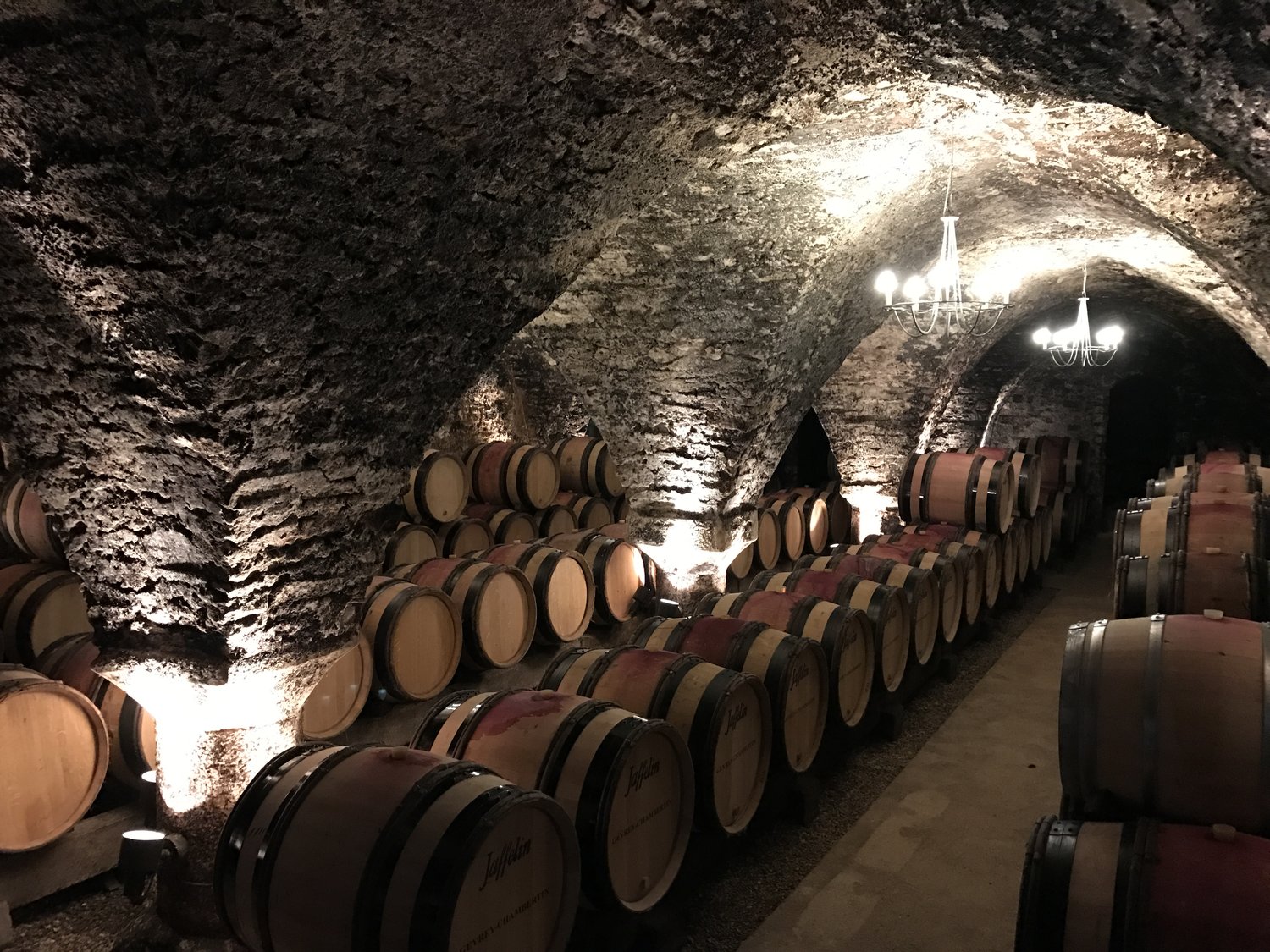
We walked through the cellars, once the domain of the monks from the church across the street. The monks built the cellars, but they used some Roman-era stone to build. In one corner, there is a foundation stone, upside down, but with the carving of a Roman’s foot, and the head of his dog. They are really deteriorated, but they are there.
We walked through the caves, saw the old bottles being stored, some with layers of mold growing on them. The caves are a perfect storage area, with a constant temperature around 15C [59F] and pretty high humidity [I would guess 80% or more]. Back to the winery for our tasting.
Neal had set out four bottles of wine, two white and two reds. Both whites were villages appellation, a 2014 Saint-Romain Villages appellation was crisp and minerally and the 2015 Rully was a bit softer but still with great acidity. The two reds were both Premier Cru, with a 2014 Fixin Hervelets and a 2014 Vernand-Vergeles En Caradeux. In the names, Fixin/VV are the villages, and the name that follows is the Premier Cru vineyard from which the fruit was sourced. The Fixin had a bit more fruit character while the VV was a bit more earthy and subdued. Neal must have liked our enthusiasm, because he decided to bring out two other bottles, a 2008 Beaune Premier Cru Les Teurons and a rosé Cremant de Bourgogne. The 2008 had a licorice and fig nose with plenty of earth tones. It was ready to drink now. The Cremant was equal parts Chardonnay, Gamay, and Pinot Noir. Dry and crisp, it was a really lovely rosé cremant, reminiscent of the one we had at Kevin’s L’Atelier in 2016. We took a bottle of the 2014 Fixin 1st Cru and the 2011 Beaune [different vineyard] 1st Cru, just to have a bottle from the village of Beaune.
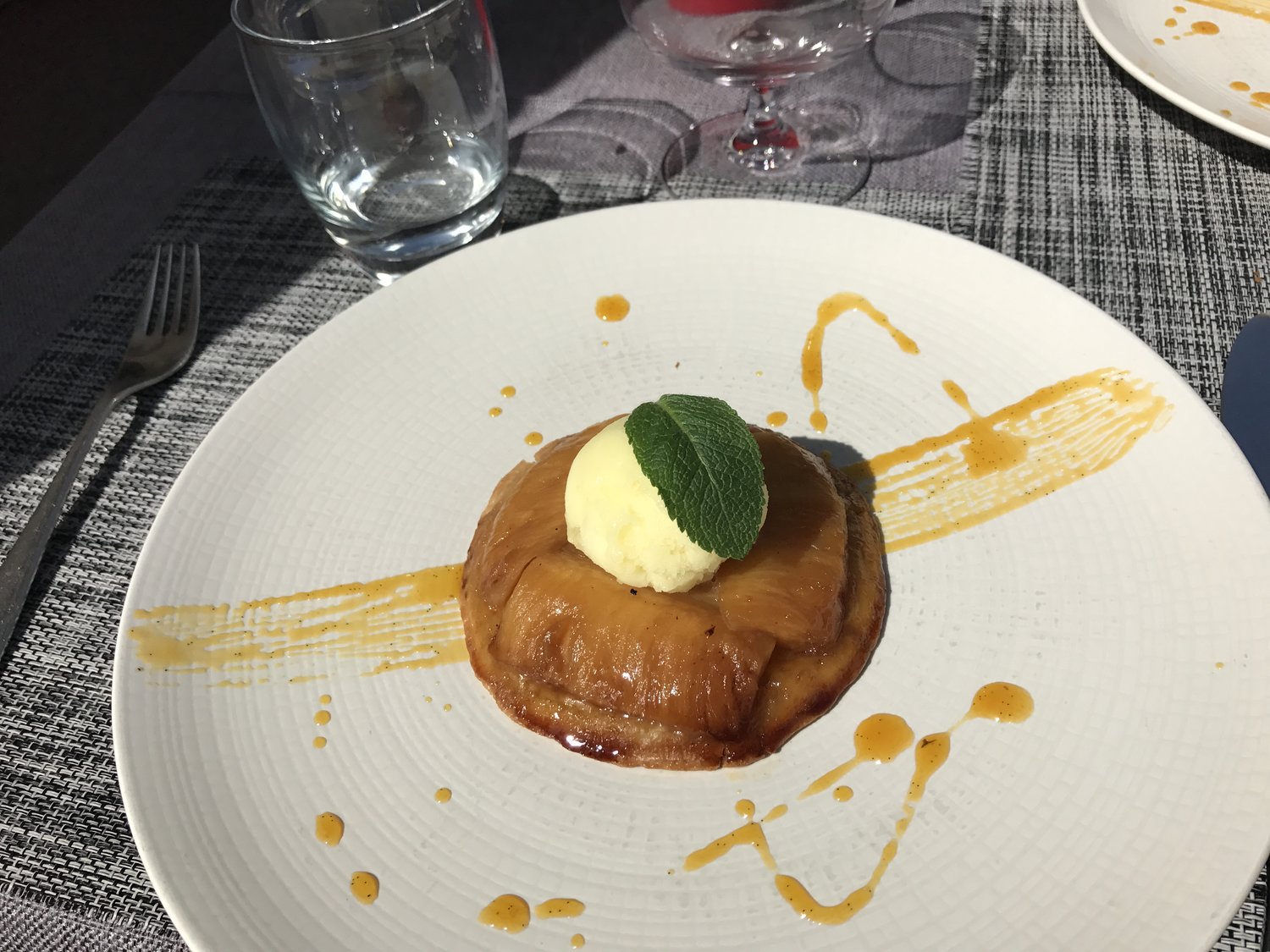
We carried our treasure back to the flat, then walked right back down into Beaune. It is less than a 10 minute walk each way, since our flat is just outside the ring of the old city center. It was time for lunch! I had searched out a place on Google Maps before we left, and typical of me, I forgot the name of the place before we were through our gate. We walked in the general direction of what I remembered of the directions, decided we were not going to find that specific place, so we looked for an interesting menu. We found one, took a table outside, and enjoyed the menu of the day. It was a tuna rillette [tuna salad!] for the appetizer, a chicken breast filet for the main, and the most delicious pineapple tart with pineapple sorbet for dessert. We finished lunch with 15 minutes to spare before our tour at Maison Joseph Drouhin.
This is a fairly large operation, but it is still family-owned. Founded by Joseph in 1880, his son Maurice expanded it in the first half of the 20 century, and Maurice’s son Robert took over in the second half. Robert’s children now run the Maison. Veronique is the winemaker, one son is the general manager, and the other son is the brand ambassador in the US. They also own several hundred acres and a winery in Oregon.
Like Jaffelin, they have a much larger, more modern production facility outside of the city center of Beaune, but they like their traditional space. We walked around the outside of the building to enter into a space with their old press, one that has been there for 400 years. The couple that joined us on this tour, the first tour we have had where we were not the only ones, asked if it was ever used.
Florien, our host for this tour, said it is still operational, and “we have used it three times in recent times.” The first was 1980, to celebrate the centennial of the house. The second was in 2000 to celebrate the new millennium, and the third was in 2005 to celebrate the fourth generation taking over operations of the winery. Florien told us that it took a full day to press enough wine to fill two barrels, and in each year, they pressed four barrels total. He said that it was really interesting to taste the two wines from the same plot, the one produced with the modern equipment compared to the old ways. He said the wines were very similar, which suggested that the winemaking has not changed much from the time of the monks.
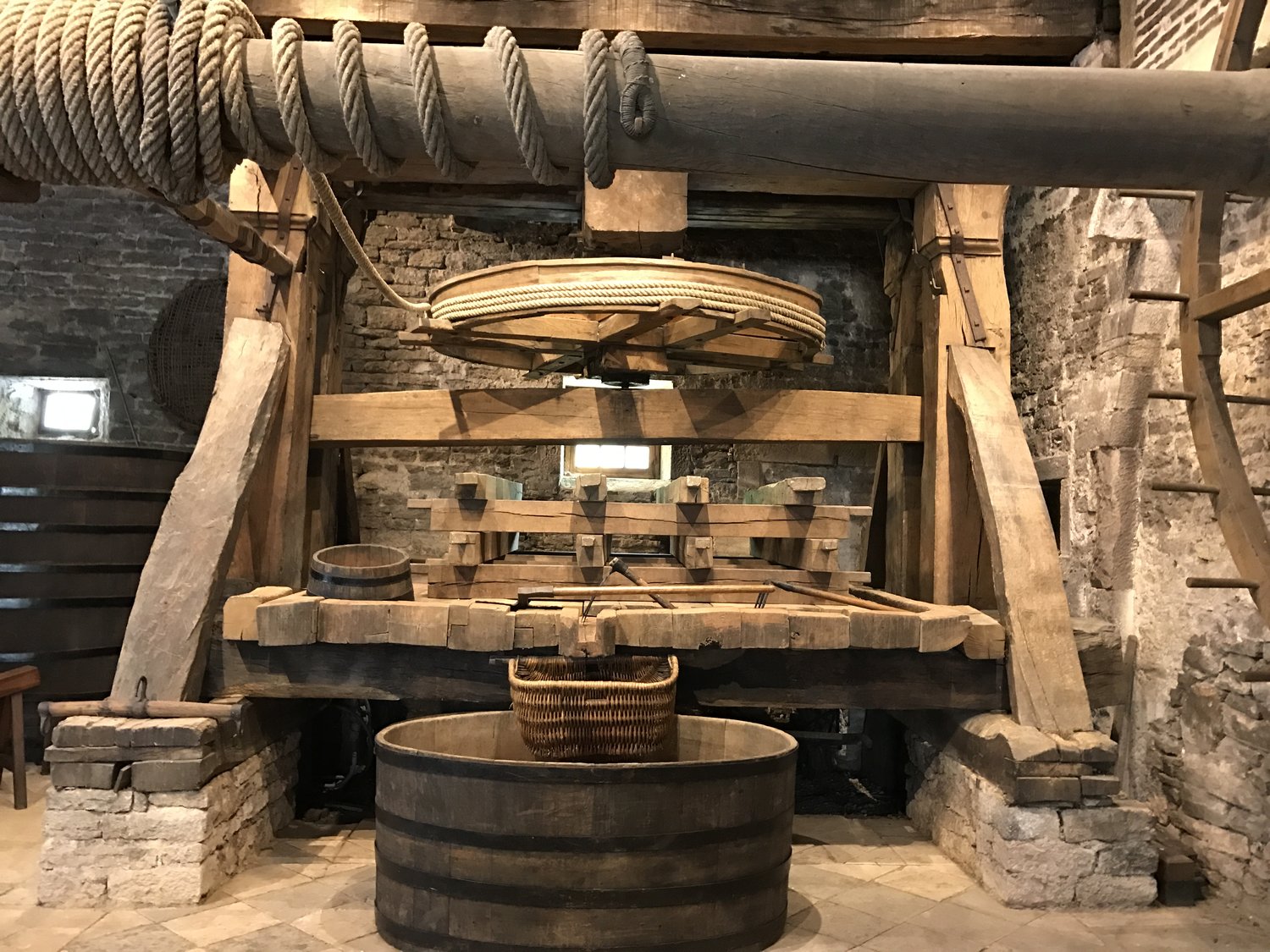
We walked down into the cellars and we saw the barrels and the bottles and the Liberty Door, where Maurice escaped the Gestapo during WWII. He was part of the French Resistance, and the Nazi’s knew it, so when they came for him near the end of the war, he escaped into the Hospices du Beaune, where he was hidden for the last four months of the war. After the war, he donated four hectares of vines to Hospices as a thank you for hiding him for four months, and every year, Drouhin purchases fruit from the Hospices vineyards to make wine for the annual charity auction. Last year, the last barrel at the auction sold for E400,000, or nearly E1400 per bottle.
We walked and walked through connecting tunnels and different cellars, some from the former cellars of the church, some from cellars of the property that Drouhin bought in 1880. All in all, there is over a hectare of cellars just for the Drouhin property! That is approximately 2.5 acres of cellars, all under that section of the old city.
We ended our walk near the showroom, still in the cellars, where we tasted six wines. Three whites: a 2014 Chablis Premier Cru Mont de Millieu, 2013 Chassagne-Montrachet Villages, and a 2014 Puligny-Montrachet Folatieres Premier Cru. Three reds: 2011 Vosne-Romanee Villages; 2011 Premier Cru that we can’t remember[!], and a 1996 Beaune Clos des Mouches Premier Cru [literally, flies, but named at a time when the French did not have a separate name for bees]. Clos des Mouches is the first vineyard that Drouhin house owned, so it is special to them and it is a 1st Cru to boot. The 1996 Mouches was the last wine we tasted. To me, the nose was really oxidized and a bit off-putting, but everyone else seemed to enjoy it. Where that wine redeemed itself was in the taste. Once I tasted it, that oxidized note faded, not completely, but it was much less in the front. The wine still had a good bit of fruit, but there was also a note of figs and licorice and to me, mushrooms, or at least something very earthy. This wine may be at its peak, but it is going to need to be consumed soon or it will be too oxidized for my nose.
The Chablis was really crisp, acidic and with a pronounced minerality. It is the only one of the wines that did not spend any time in oak. With a little time in bottle, I think this one will be really nice, but at least without food to tone down the acid, it is tart. The Chassagne-Montrachet was crisp with nice minerality, without being quite so assertive. It was a really nice wine. The P-M, to my nose, had too much oak; it was too present for my liking.
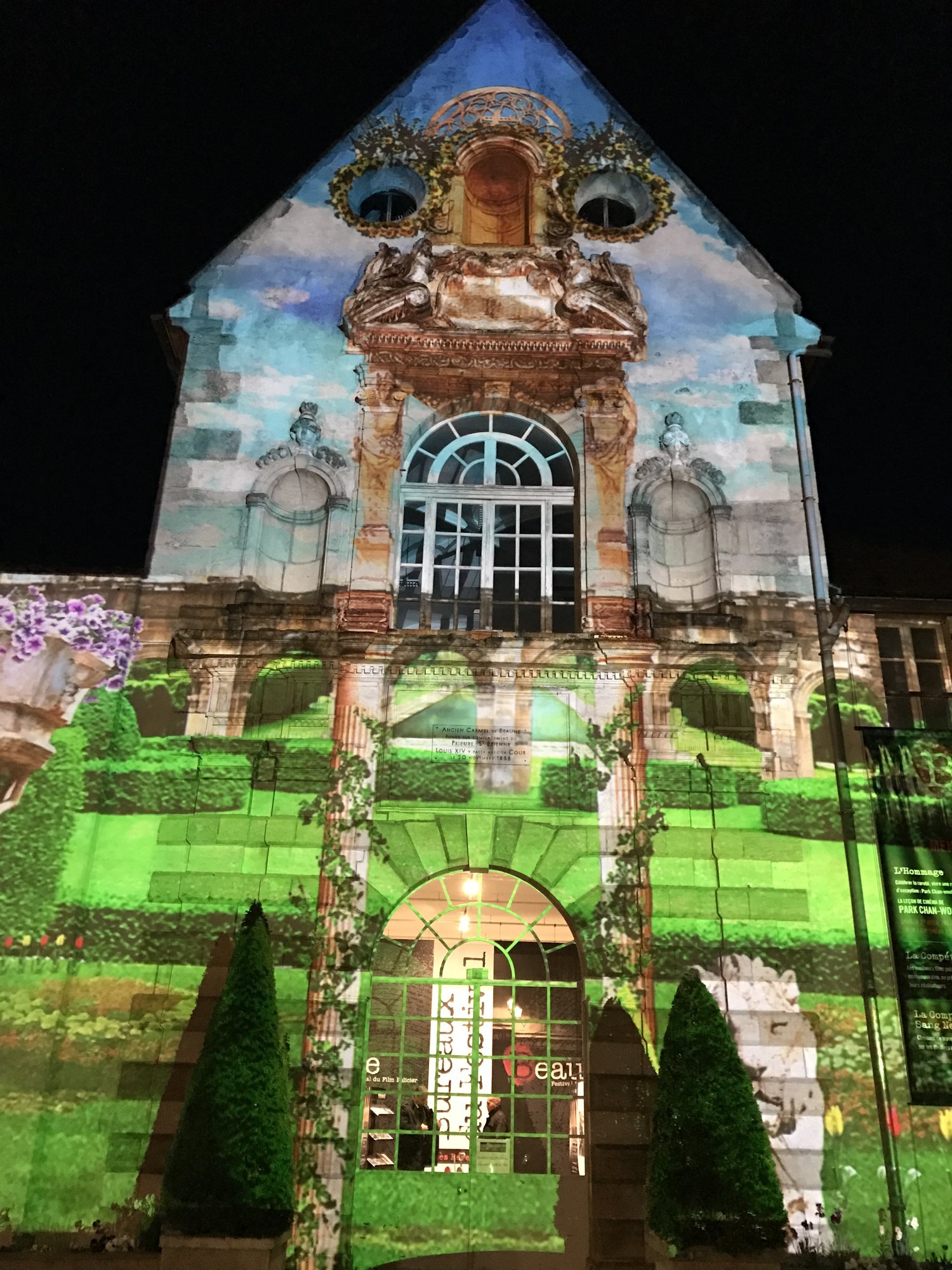
The 2011 Vosne-Romanee [I joked that Dianne liked this one because it was easy to pronounce!] was fruit-forward with some really delicate tannins. It was my favorite of all the wines we tasted from this house; Dianne really liked this one too, and not just because of the ease of pronunciation. The other Premier Cru was significantly more earthy, less fruit, and possibly more complex, but neither of us liked it nearly as much. We bought a bottle of the Vosne-Romanee and the 2013 Chassagne-Montrachet. When we were checking out, Neal chuckled when he saw the bottle of Vosne-Romanee.
Back once more with our newest treats, and we took a short nap this afternoon. Up at 1800, we took a leisurely stroll to the far side of the old city to a Japanese place for a sushi meal. It seems counter-intuitive, but we decided we needed a different taste for this meal. It was a decent meal, but not the best or worst that we have had on this trip. I had a nigiri platter, and Dianne had a maki, sashimi, and nigiri platter. The sushi, maki, and nigiri were heavily focused on salmon. We both had dessert, and both of those were really good. A chocolate gateau [molten chocolate lava cake, basically] and a lady finger with a yuzu jelly, pistachio layer and cream. Both were really very good.
As we walked back through the middle of old Beaune, the first night of The Paths of Light [Les Chenin de Lumieres] began. The city has set up projection stations at key buildings in the city onto which they are projecting really intricate lighted animations. On the bell tower, the animation shows the inside of the building, then like pieces in Tetris, the exterior ‘falls’ into place. On the church, it sketches the outline of the details. On one of the hotels, it was a fantasy art show, and on the Hospices de Beaune first fire, extinguished by angels, then it transforms in the the tapestry and symbols of HdB. There were others, but those were the only ones we saw. It was a really nice way to end our stay in Beaune.
31 March 2017
This morning, alarm set for 0730, one snooze, and then a shower. Dianne walked over to the patisserie across the street, and grabbed a couple of croissants and pain au chocolat for breakfast. She fixed us a spot of tea, and we had breakfast.
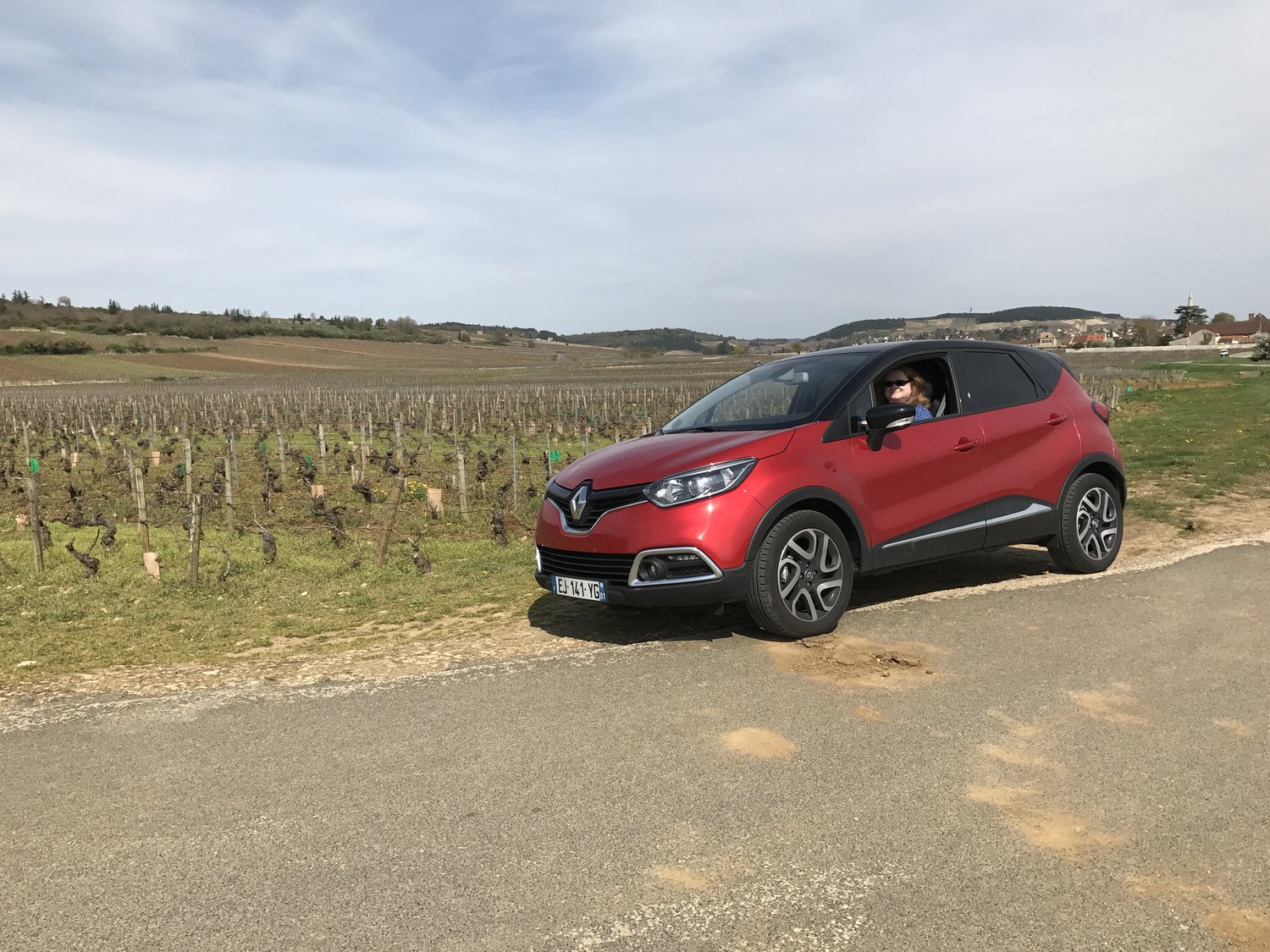
We loaded up all of our wine treasures plus the half case Shaka asked us to ship, and we drove up to the MBE in Dijon. Unlike our misadventures last year in Siena and Sinalunga, where finding the MBE proved to be impossible, this one was right where Google Maps and GPS said it would be. We went to the back of the block, found a parking spot, and carried the wine to the MBE office. The lady working there asked us for the invoice, which would have been impossible because they were all from multiple locations and we did not have Shaka’s receipt. She called another location, and they told her it was ok to create a pro-forma and statement. Relieved, we handed over another E236 for shipping, customs, and insurance. We also tossed the six-bottle foam holder I had brought with us because it was disintegrating. We bought a new one for E5 so we could get a few bottles in Italy, if we decide to do that.
We drove back to Beaune and our flat, and we spent the next hour or so packing our bags, trying to maximize efficiency. Loaded the car, said good-bye to Lara’s husband, whose name we do not know, and who does not speak a word of English. I made a valiant attempt at speaking French; I think I told him his home is beautiful, but who knows what I actually said.
To the right we went because it was safer and easier and we knew there was a fuel station just south of us. Pulled in, and like all of the other fuel centers, the card is rejected at the pump. Went in to ask the attendant to turn on the pump and handle the transaction in his station, and he said without a PIN, he could not help. It annoyed me, but I kept that to myself until I got back to the car. I think I was starting to get hangry because it seemed everything annoyed me. The next station south was blocked by a tanker, so we just kept driving. We drove through the vineyards around Mersault, then I started a GPS search for fuel. Found an AGIP in Montrachet that was very helpful. E51 later, and the car was full. Dianne asked the attendant for a place for lunch, and she said a very good place “auberge” just up on the left.
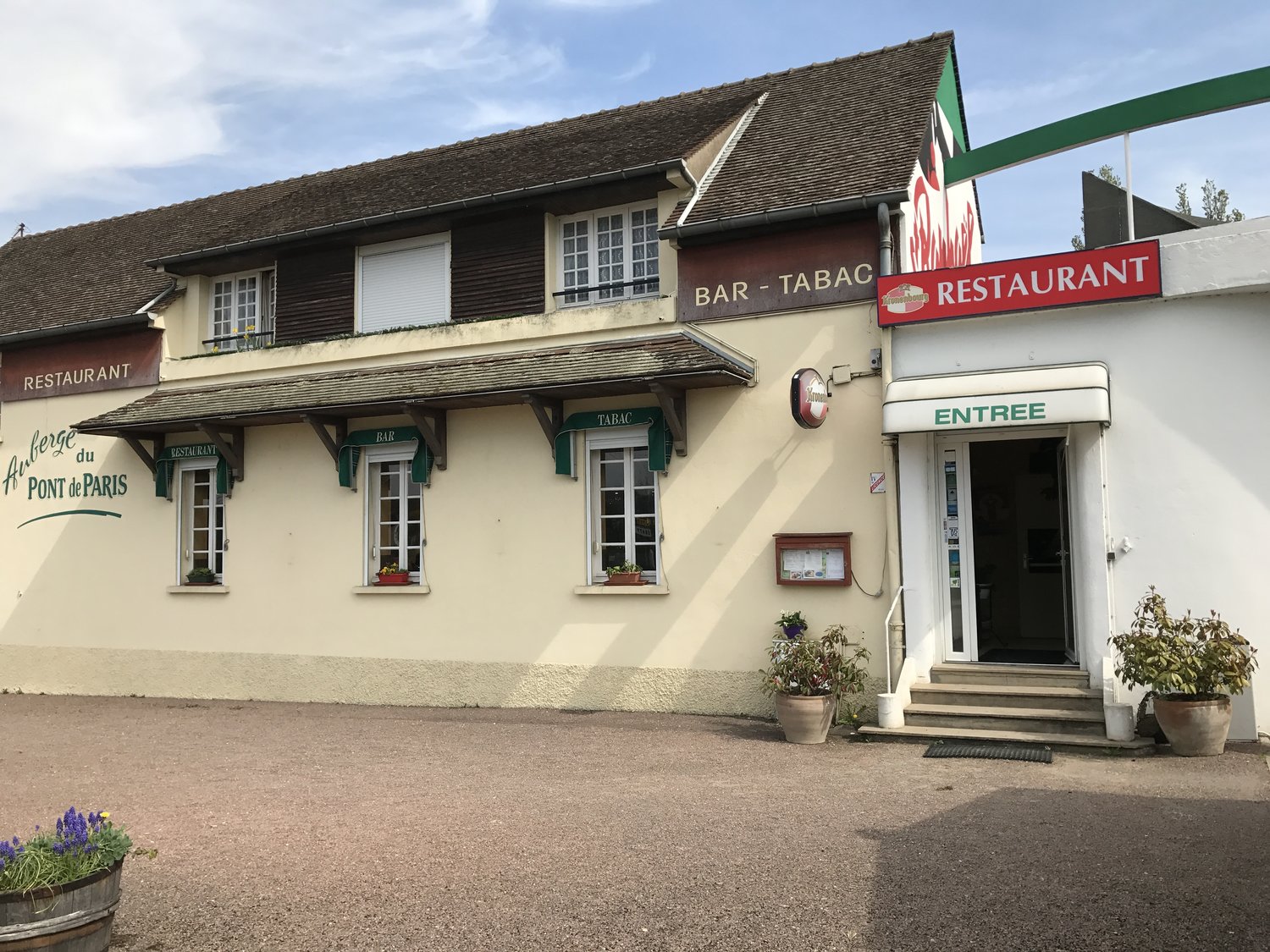
We headed that direction and found Auberge du Pont de Paris. We walked in, asked if we were too late for lunch, and the motherly lady working the counter said, “Of course. Let me show you the menu first.” The lunch menu was a salad or an escargot quiche starter and the main course was fish. I think she was afraid we would not want what she was serving. We said, “That sounds great!” And she invited us in. We were seated next to a British resident who had grown up in the area. He was here visiting his father, with whom he was having lunch. He asked if we were from the UK or the US. He lives in Newcastle, teaching French and Italian at the local university. The conversation, of course, veered to politics. He said, “Trump is in the French news again. They really hate him.” He went on to say, with Brexit, Trump, and the leading candidates in the French election being crazy and crooks and the election just two weeks away, it looked like the whole of western civilization was losing its collective mind. Our food arrived and he said enjoy your lunch and our conversation was ended.
The escargot quiche was good, not great, but I think it was the heavy presence of mushrooms that did me in. We both cleaned our plates, and the lady was very surprised. She called us brave! The fish dish was tasty, with an ‘American’ sauce that we could not quite identify. We finished with a creme brûlée. I walked to the counter to pay, and I said, “Thank you for lunch. It was delicious.” She said, “Thank you. I am almost sorry to have to take your money!” She and I had a big laugh together.

Back to the car, and we drove around the area, in the vineyards, drove by L’Atelier in Corcelles-les-Arts, and then headed north, making our way toward Dijon. We took the Route des Grand Crus most of the way, with deviations along the way. We traveled on D974 for a bit, and on single lane dirt roads for a bit. Beautiful views, lots of work going on in the vineyards, and we got to see the horses working again. And interestingly, it was the same couple that we saw working the horses last year! They were working a different vineyard, though with the way that Burgundy vineyards tend to be chopped up, they could have been working for the same vineyard or winery.
We made it back to Dijon, and circled the location GPS was giving us for Hertz two times. Dianne was getting a little frustrated, and I was not helping her mood, so she parked, and I walked down to where the GPS kept trying to point us. Sure enough, there was the Hertz office, but it was not obvious how to get there. The guy told me to make the left at the end of this stretch and drive along the tracks of the tram, parking the car just on the sidewalk outside of the office. So I did. He seemed satisfied, so down the hill to the Gare we went.
It was a bit of a wait. The Hertz office closed at 1800, and we dropped the car just a few minutes before that, but our train was not until 2157, which means we had a four hour wait at the train station. It felt like we were just wasting time, but there was nothing else we could have done. The overnight train is an exciting way to travel and sleep, one that I have never done before. Dianne and Laura took one from Paris to Venice in 1996, but this will be our first trip like this together. I am excited about the experience.
We spent most of the time waiting in a cafe, having a crepe, a coffee, some juice, and a lemon soda water. While we waited, we made our travel journal notes, and Dianne worked on a crossword or two.
